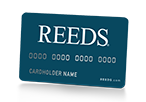This is a demo store. No orders will be fulfilled. (1368487-reeds-pro-web-1.reeds.com)

WEDDING BAND 101
Let's Talk Wedding
Band Metals
- Home
- Best Metal for Wedding Bands
What Type Of Metal Should My Wedding Band Be?
We hear you. There are so many choices when it comes to choosing your wedding ring, and nothing is more fundamental than choosing your ring’s metal.
How To Choose The Best Metal For A Wedding Ring
While the best ring material is pretty subjective, we have rounded up a few of the most common metals for rings to give you a quick overview. Finding the best wedding band materials is often a question of personal style and lifestyle, so keep that in mind. We can’t honestly tell you that one metal is best for wedding rings. We can only explore the features of each so you can make an informed decision. Let’s dive in.
Types of Metal Wedding Bands
Yellow Gold Wedding Bands
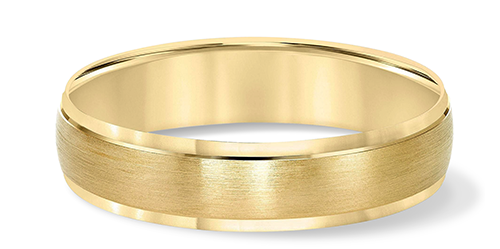

Yellow gold wedding rings are total classics—elegant and timeless with a warm, radiant glow. Pure yellow gold occurs naturally, but in jewelry making it’s often combined with other metals for a couple of reasons, like increasing its strength (pure gold alone is fairly soft and can scratch) or creating a specific tone of yellow gold. Flattering for all skin tones and evoking a sense of luxury, yellow gold is an enduring metal in terms of style and longevity.
White Gold Wedding Bands
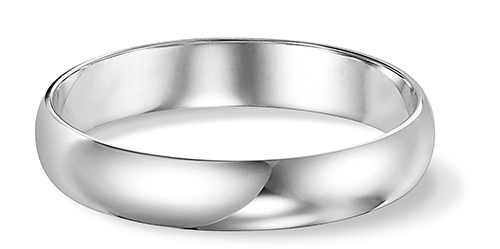

If you want a gold wedding ring but love the look of white gold over yellow, there’s an added bonus: Because white gold rings are alloyed with other metals to get that gorgeous silvery-white sheen, they’re also inherently a bit more durable and scratch resistant than pure yellow gold. They’ll usually be mixed with silver, zinc, copper, or palladium and plated with rhodium, which gives a luxe shine. Another perk? Your white gold wedding ring will naturally be a great partner to any diamonds in the band, since it won’t appear to color the stone as it reflects the metal.
Rose Gold Wedding Bands
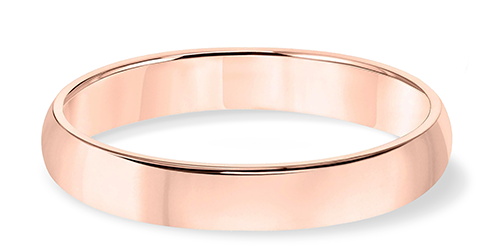

Rose gold has been a super popular pick for a wedding band metal. Rose gold is created by blending metals like gold, silver, and copper. The hue can vary a bit depending on the proportions of that blend, from a soft rosy blush to more of a copper tone. Rose gold wedding bands tend to have good strength and longevity thanks to the blending process, which makes the ring more durable. (Note that compared to white gold, which is plated with rhodium, rose gold is still a bit softer and can scratch easier than other metal choices.) In terms of vibe, there’s something unmistakably romantic and feminine about a radiant pink shimmer, and even a bit vintage feeling depending on the style.
Tungsten Wedding Bands
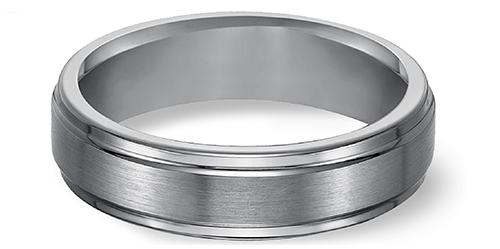

Multiple times stronger than titanium, tungsten wedding bands make a wonderful choice for people who are concerned about their lifestyle and the long-lasting beauty of their ring. If you work with your hands or are worried about scratches and other blemishes, a tungsten wedding band might be your best choice. Because it’s so hard, be extra sure that you’ve sized your ring right—then enjoy a lifetime of its low-maintenance (i.e. non-tarnishing!) appeal.
Cobalt Wedding Bands
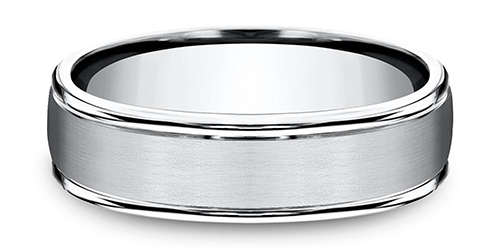

You might associate cobalt with a royal blue color, but the super-hard metal of the same name can actually range from silvery grey to black. Like rose gold wedding rings, cobalt wedding bands are created by blending metals—tungsten, chromium, or iron make may an appearance in your ring and serve their part to strengthen it. Besides its natural scratch resistance, one major perk of cobalt wedding bands is that they tend to be more budget-friendly than other options, like platinum. Be sure to size your ring correctly though—you can’t resize a cobalt wedding band.
Tantalum Wedding Bands
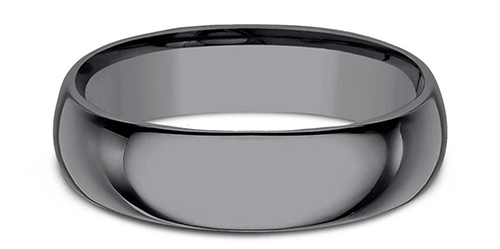

If you like to stand out or are looking for a unique wedding ring metal, you’ll want to explore tantalum. A gorgeous shade of blue-grey that can range from light to dark charcoal, tantalum wedding bands are hypoallergenic and tend to be pretty affordable. Curious about its durability? While tantalum wedding rings are generally known as strong, they still can scratch. But it’s nothing that can’t be buffed away with a professional polish. The only drawback to a tantalum wedding ring? If you’re seeking a more delicate style, it might be tough to find—tantalum rings are known as being a bit bulky.
Titanium Wedding Bands
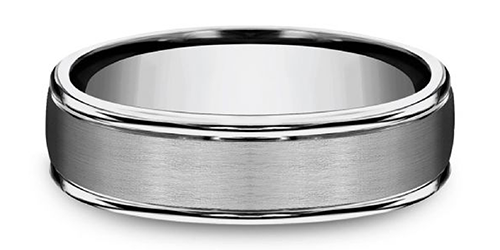

Titanium is often chosen as a wedding ring material because it offers a bunch of benefits due to its strength, namely its inherent scratch resistance. It also feels incredibly lightweight to wear, which can be a big plus to many (especially guys who aren’t used to wearing rings!) A titanium wedding band is very easy to care for and is a great choice for the long haul. Take extra care to size appropriately though—the one potential drawback of this metal is that it can’t be easily size-adjusted.
What Type Of Metal Should My Wedding Band Be?
We hear you. There are so many choices when it comes to choosing your wedding ring, and nothing is more fundamental than choosing your ring’s metal.
How To Choose The Best Metal For A Wedding Ring
While the best ring material is pretty subjective, we have rounded up a few of the most common metals for rings to give you a quick overview. Finding the best wedding band materials is often a question of personal style and lifestyle, so keep that in mind. We can’t honestly tell you that one metal is best for wedding rings. We can only explore the features of each so you can make an informed decision. Let’s dive in.
Types of Metal Wedding Bands
Yellow Gold Wedding Bands


Yellow gold wedding rings are total classics—elegant and timeless with a warm, radiant glow. Pure yellow gold occurs naturally, but in jewelry making it’s often combined with other metals for a couple of reasons, like increasing its strength (pure gold alone is fairly soft and can scratch) or creating a specific tone of yellow gold. Flattering for all skin tones and evoking a sense of luxury, yellow gold is an enduring metal in terms of style and longevity.
White Gold Wedding Bands


If you want a gold wedding ring but love the look of white gold over yellow, there’s an added bonus: Because white gold rings are alloyed with other metals to get that gorgeous silvery-white sheen, they’re also inherently a bit more durable and scratch resistant than pure yellow gold. They’ll usually be mixed with silver, zinc, copper, or palladium and plated with rhodium, which gives a luxe shine. Another perk? Your white gold wedding ring will naturally be a great partner to any diamonds in the band, since it won’t appear to color the stone as it reflects the metal.
Rose Gold Wedding Bands


Rose gold has been a super popular pick for a wedding band metal. Rose gold is created by blending metals like gold, silver, and copper. The hue can vary a bit depending on the proportions of that blend, from a soft rosy blush to more of a copper tone. Rose gold wedding bands tend to have good strength and longevity thanks to the blending process, which makes the ring more durable. (Note that compared to white gold, which is plated with rhodium, rose gold is still a bit softer and can scratch easier than other metal choices.) In terms of vibe, there’s something unmistakably romantic and feminine about a radiant pink shimmer, and even a bit vintage feeling depending on the style.
Tungsten Wedding Bands


Multiple times stronger than titanium, tungsten wedding bands make a wonderful choice for people who are concerned about their lifestyle and the long-lasting beauty of their ring. If you work with your hands or are worried about scratches and other blemishes, a tungsten wedding band might be your best choice. Because it’s so hard, be extra sure that you’ve sized your ring right—then enjoy a lifetime of its low-maintenance (i.e. non-tarnishing!) appeal.
Cobalt Wedding Bands


You might associate cobalt with a royal blue color, but the super-hard metal of the same name can actually range from silvery grey to black. Like rose gold wedding rings, cobalt wedding bands are created by blending metals—tungsten, chromium, or iron make may an appearance in your ring and serve their part to strengthen it. Besides its natural scratch resistance, one major perk of cobalt wedding bands is that they tend to be more budget-friendly than other options, like platinum. Be sure to size your ring correctly though—you can’t resize a cobalt wedding band.
Tantalum Wedding Bands


If you like to stand out or are looking for a unique wedding ring metal, you’ll want to explore tantalum. A gorgeous shade of blue-grey that can range from light to dark charcoal, tantalum wedding bands are hypoallergenic and tend to be pretty affordable. Curious about its durability? While tantalum wedding rings are generally known as strong, they still can scratch. But it’s nothing that can’t be buffed away with a professional polish. The only drawback to a tantalum wedding ring? If you’re seeking a more delicate style, it might be tough to find—tantalum rings are known as being a bit bulky.
Titanium Wedding Bands


Titanium is often chosen as a wedding ring material because it offers a bunch of benefits due to its strength, namely its inherent scratch resistance. It also feels incredibly lightweight to wear, which can be a big plus to many (especially guys who aren’t used to wearing rings!) A titanium wedding band is very easy to care for and is a great choice for the long haul. Take extra care to size appropriately though—the one potential drawback of this metal is that it can’t be easily size-adjusted.

